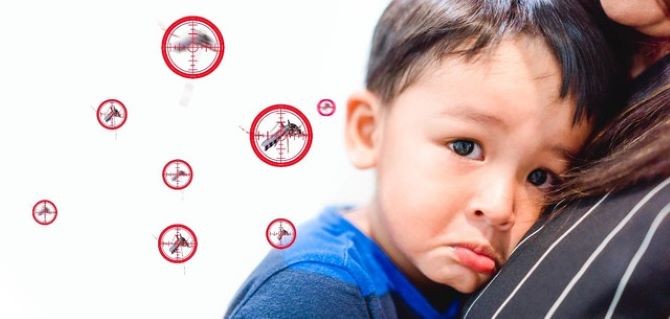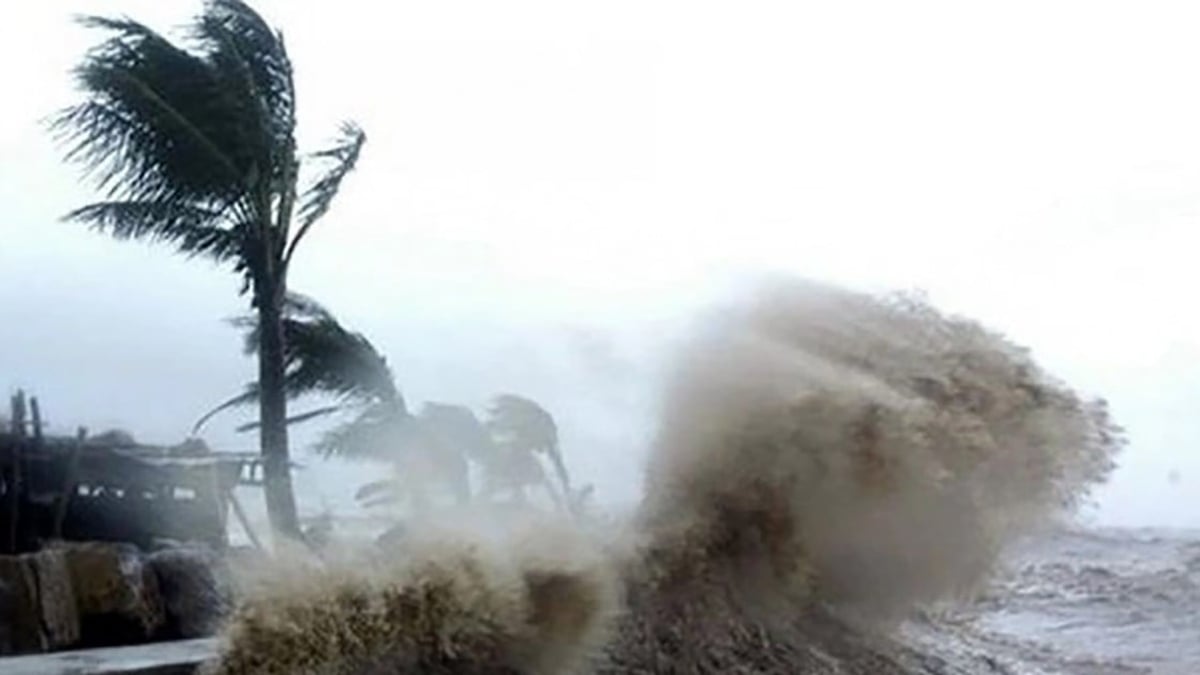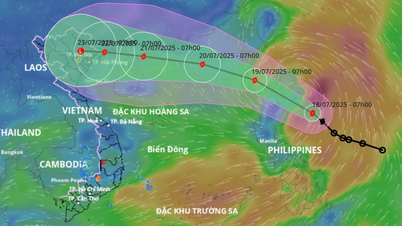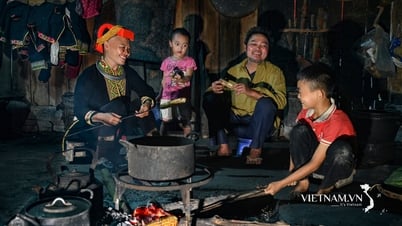At the National Children's Hospital, children with severe dengue fever are continuously admitted. Doctors warn that children with fever should never be taken lightly at this time.
 |
| Children with dengue fever often have a variety of different symptoms. |
Many severe cases
Dr. Nguyen Van Lam, Director of the Tropical Disease Center, National Children's Hospital, said that since the beginning of the year, the Center has received 120 children with dengue fever for examination and treatment, of which more than 50 children were hospitalized with warning signs.
Previously, boy VH (8 years old, in Hanoi ) was admitted to the hospital with a high fever of 39-40 degrees, not responding to antipyretics, body aches, vomiting, stomachache, headache, and poor appetite.
At the time of admission, the child had a continuous high fever, with dengue fever spots on the face, but then the pulse appeared to be rapid, difficult to detect, blood pressure dropped, platelets decreased, liver enzymes increased...
The child had a history of dengue fever 4 years ago, the family did not think the child had dengue fever.
The child had a history of dengue fever 4 years ago, the family did not expect that the child would have dengue fever.
"This is one of the most severe dengue fever cases hospitalized this year. We treated the child according to the Ministry of Health 's protocol for severe dengue fever. After 10 days of intensive treatment, the child's general condition was stable and alert, and he was discharged from the hospital," said Dr. Dao Huu Nam, Head of the Intensive Care Department, Center for Tropical Diseases.
Another child patient, TP (11 years old, in Hanoi) was also hospitalized for dengue fever with warning signs. The child had previously had dengue fever.
The child was hospitalized on the 5th day of the illness with symptoms of abdominal pain, intermittent fever, frequent vomiting, and poor appetite. He was treated at a hospital near his home but did not improve.
According to Dr. Lam, dengue fever is an acute infectious disease caused by a virus called Dengue. This disease can be transmitted from person to person when bitten by an infected mosquito.
Dengue fever virus has 4 types corresponding to 4 serotypes: DEN-1, DEN-2, DEN-3 and DEN-4.
Dangerous phase warning
Children with dengue fever often have a variety of symptoms. The disease starts quite suddenly and progresses through 3 stages: fever stage, dangerous stage and recovery stage.
Fever stage
In the early stages of the disease, children have a sudden, continuous high fever. Young children are restless and fussy, older children complain of headaches, loss of appetite, nausea, skin congestion (possible petechiae under the skin), muscle and joint pain, pain in the eye sockets, bleeding gums or nosebleeds.
Dangerous phase
After the fever stage, children enter the dangerous stage of the disease, usually around the 3rd to 7th day after contracting the disease.
Symptoms of dengue fever in children at this stage may still have fever or have subsided, the child has plasma leakage.
If the plasma leakage is severe, it will lead to shock, with easily recognizable symptoms such as: restlessness, restlessness, lethargy, cold extremities, cold, clammy skin, rapid, weak pulse, little urine, low blood pressure or unmeasurable blood pressure.
In particular, children have subcutaneous bleeding or bruises, scattered or concentrated hemorrhages on the front of both calves and the inside of both arms, abdomen, thighs, ribs; bleeding in the mucous membranes such as nosebleeds, bleeding gums, blood in the urine...
Recovery phase
After the dangerous stage of about 48 - 72 hours is the recovery stage, the child's fever is gone, the condition improves a lot, the child has an appetite, blood pressure is more stable and urinates more. When the blood test shows that the white blood cell count increases rapidly, the platelet count gradually returns to normal, but usually slower than the white blood cell count.
During dengue fever season, if your child has at least one of these signs, do not delay hospitalization:
- Children struggle, are lethargic, and have continuous abdominal pain in many areas of the liver.
- Child has nausea and vomiting more than 3 - 4 times within 60 minutes.
- Mucosal bleeding, bleeding gums, rapid decrease in platelets. Bleeding gums, nosebleeds, early and prolonged menstruation (for girls).
- Little urine, black stools.
Source








![[Video] More than 100 universities announce tuition fees for the 2025–2026 academic year](https://vphoto.vietnam.vn/thumb/1200x675/vietnam/resource/IMAGE/2025/7/18/7eacdc721552429494cf919b3a65b42e)




















































































![[Infographic] In 2025, 47 products will achieve national OCOP](https://vphoto.vietnam.vn/thumb/402x226/vietnam/resource/IMAGE/2025/7/16/5d672398b0744db3ab920e05db8e5b7d)





Comment (0)